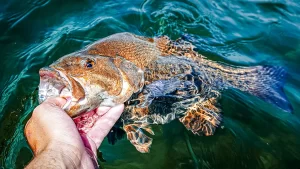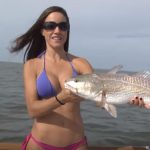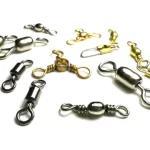Fishing the spawn can be undeniably exciting. Watching bass react to bait and landing fish one after another makes it a popular choice for many anglers. However, this practice can have long-term impacts on fisheries, and it may eventually lose its appeal due to the repetitive nature of targeting nesting bass. Fortunately, there are other productive ways to fish during the spawn without disturbing vulnerable fish.

The Impact of Targeting Spawning Bass
Anglers pursuing bedding bass disrupt one of the most critical stages of a bass’s life: reproduction. Bass are highly vulnerable during this time, defending their nests and fry from predators. Constantly removing fish from their beds interrupts this process and increases the likelihood of eggs and fry being eaten.
In heavily pressured waters, it’s common to see the same bass caught repeatedly by different anglers. Devices like “floggers,” used to view beds beneath the water’s surface, further intensify the pressure on bass populations. While catching fish off beds is legal in many places, the cumulative effect can negatively impact fishery health over time.
Understanding Bass Spawning Cycles
Not all bass spawn simultaneously. Factors like moon phases and water temperature influence when bass initiate spawning. In many regions, the first or second full moon of spring, paired with the right water temperatures, triggers large waves of spawning activity. However, some bass will spawn later, while others are in pre-spawn or post-spawn phases.
This staggered cycle means there are always other bass to target without disturbing those on nests. Monitoring lunar calendars and water temperatures can provide key insights on when to switch tactics.
Finding Alternatives During the Spawn
Seek Out Different Species
When smallmouth bass are spawning, largemouth bass are often still in pre-spawn mode and can provide excellent fishing opportunities. Anglers in northern waters, for example, often shift focus to largemouth in smaller lakes while smallmouth are on beds in larger systems like the St. Lawrence River.
Likewise, in regions where both species are present, targeting largemouth in vegetation or around structures can yield solid results. These fish are often more aggressive and willing to strike during pre-spawn.
Follow Post-Spawn Patterns
After the initial wave of spawning, some bass will move to deeper water or transition to summer feeding patterns. During this phase, bass become more interested in feeding than guarding nests. As bluegill begin their own spawn, bass often patrol nearby looking for easy meals.
Swim jigs in bluegill patterns, like the Beast Coast Workingman’s Swim Jig paired with a Strike King Rage Menace Grub, are ideal for imitating these baitfish. Targeting areas with emergent vegetation, docks, or submerged brush can be particularly productive.
For lethargic post-spawn bass, finesse presentations can also be effective. Dropshots with a 6-inch Roboworm or a wacky-rigged Yamamoto Senko often entice sluggish fish that aren’t keen on chasing faster-moving baits.
Covering Water for Roaming Fish
Not all bass are tied to beds during the spawn. Some males may still be scouting for nesting spots, while females prepare for the process. These roaming bass are often found in shallow flats or along transition zones.
Square-bill crankbaits like the Luhr Jensen Speed Trap are excellent for covering water and provoking reaction bites. Bouncing these lures off rocks and submerged cover can trigger aggressive strikes from territorial bass.
For smallmouth in particular, a finesse approach may work better. The Great Lakes Finesse Sneaky Underspin, paired with a Drop Minnow, mimics smaller baitfish and excels at enticing fish that are cruising shallows. A slow, steady retrieve just above the bottom often yields big bites.
Ethical Considerations
While fishing during the spawn isn’t inherently wrong, exercising restraint can help maintain healthy fisheries. Avoid repeatedly targeting the same beds, and consider releasing spawning fish promptly to minimize stress. Exploring alternative methods not only protects fisheries but also challenges anglers to refine their skills and discover new productive patterns.
Plenty of bass remain catchable during the spawn without resorting to bed fishing. By broadening strategies and staying mindful of the fishery’s health, anglers can continue enjoying successful days on the water while supporting sustainable bass populations.
Image/Source: Wired2Fish





